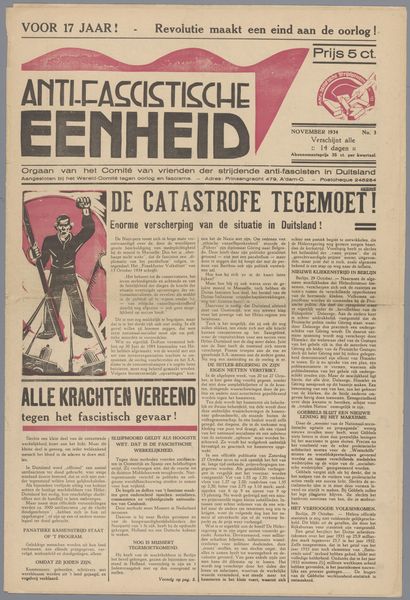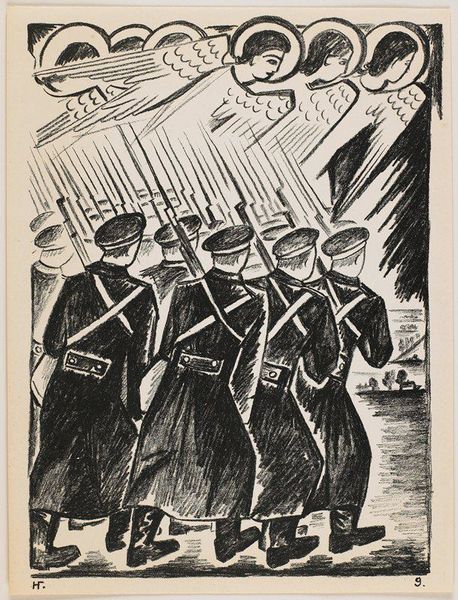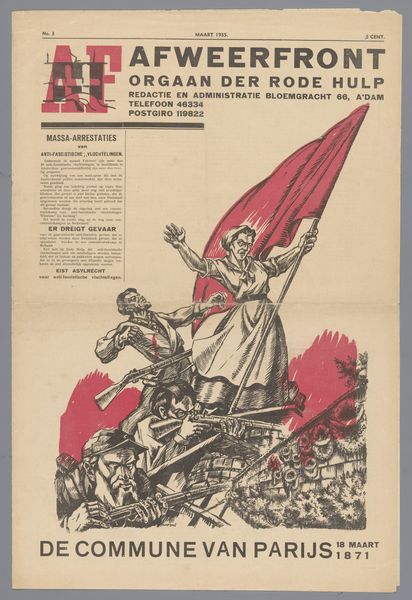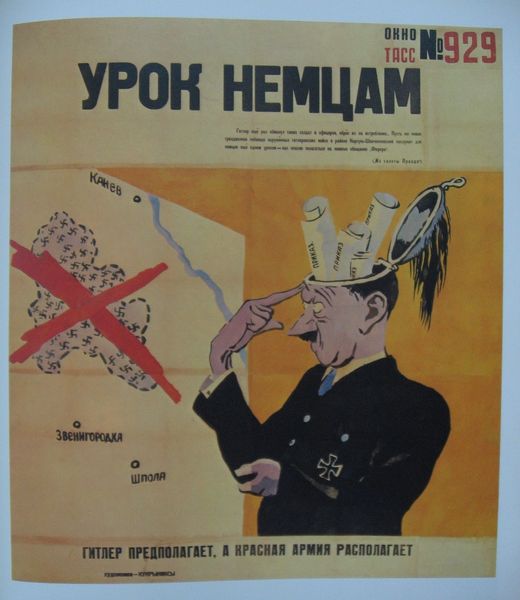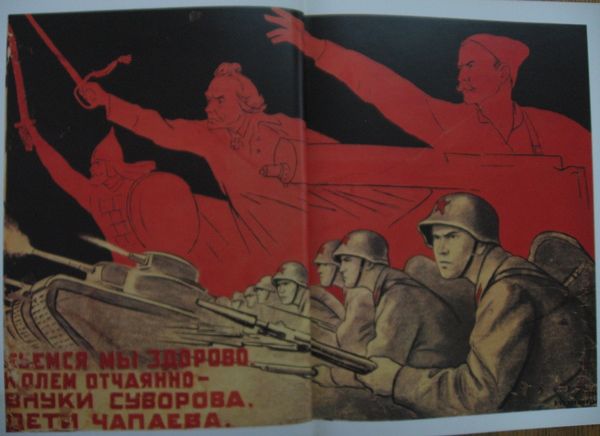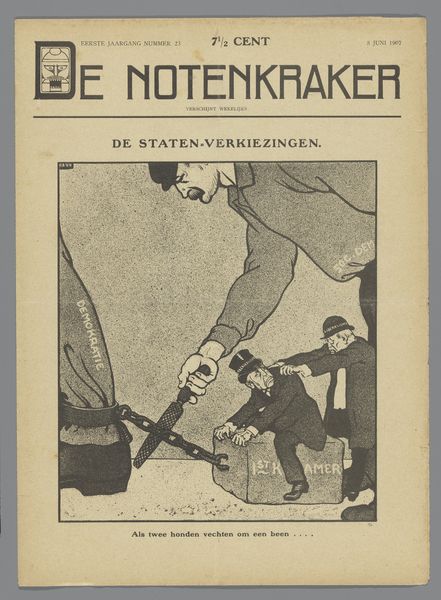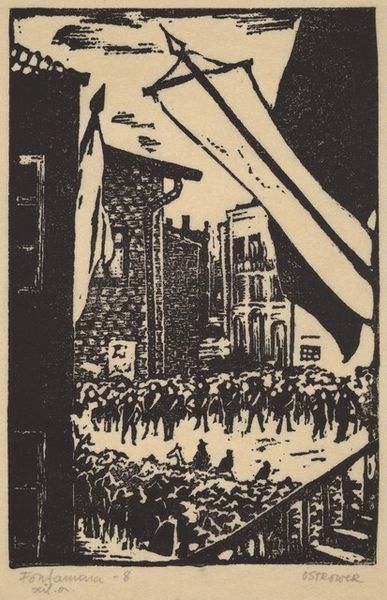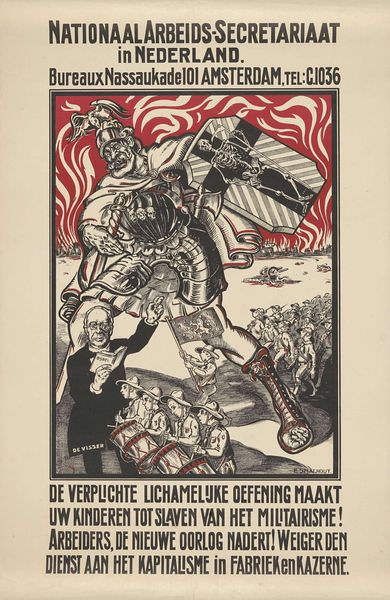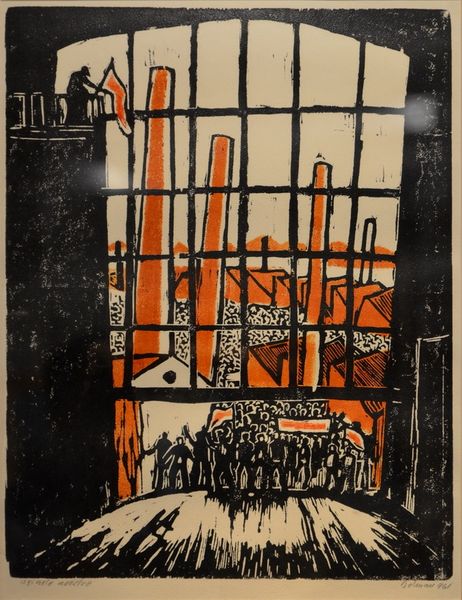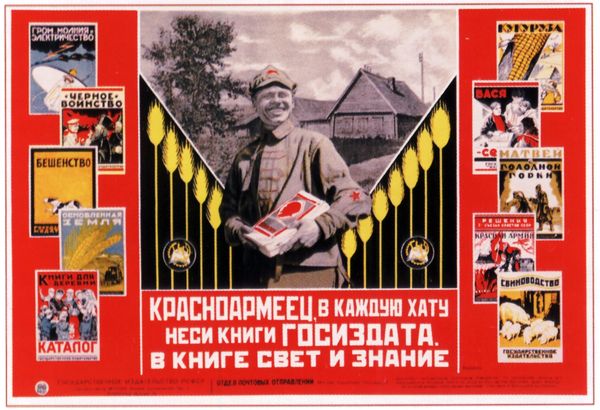
graphic-art, collage, print, poster
#
art-deco
#
graphic-art
#
collage
# print
#
activist-art
#
social-realism
#
poster
Dimensions: height 49.7 cm, width 33.6 cm
Copyright: Rijks Museum: Open Domain
Curator: Here we have a powerful piece titled "Anti-fascistische eenheid" or "Anti-fascist Unity," a poster dating from 1934 to 1935, created by the Vrienden der strijdende anti-fascisten in Duitsland. It seems to employ graphic art, perhaps a print combined with collage techniques. Editor: It strikes me as a very urgent work, with a limited but strident palette. The heavy black lines give the figures a monumental, almost woodcut-like feel. Curator: The simplification of form, the strong contrast—it adheres to social realism while also carrying a bold, art-deco aesthetic. Notice how the figures are presented: a mass of determined workers marching forward. The formal elements convey collectivity and strength. Editor: Absolutely. And look at who they're trampling underfoot: figures in suits, a judge perhaps, clear visual symbols of capitalist oppression and authoritarian power structures. It’s very directly engaging with the political struggles of the time, reflecting the rise of fascism in Europe and the urgent need for a united resistance. Curator: The typography is particularly striking, the way “Anti-Fascistische Eenheid” dominates the top portion. The layout and the red banner add a layer of graphic sophistication. Editor: But more than the form, it's about function. The artist, the “Friends of Anti-Fascist Fighters in Germany”, meant to incite action. "Unity in action against war and Fascism"—a plea so relevant today. Curator: The visual construction certainly supports that goal. Each element, from the marchers to the fallen figures, contributes to a cohesive message. The formal structure underlines a very intentional design. Editor: Ultimately, this poster is not just a historical artifact; it is a reminder that art can—and perhaps should—be a tool for resistance. Its direct visual language speaks across time and language. Curator: I see a compelling use of form to inspire unity. The piece offers insight into a particularly tense period in European history. Editor: And maybe reminds us that even visually arresting design can still be a call to arms.
Comments
No comments
Be the first to comment and join the conversation on the ultimate creative platform.
